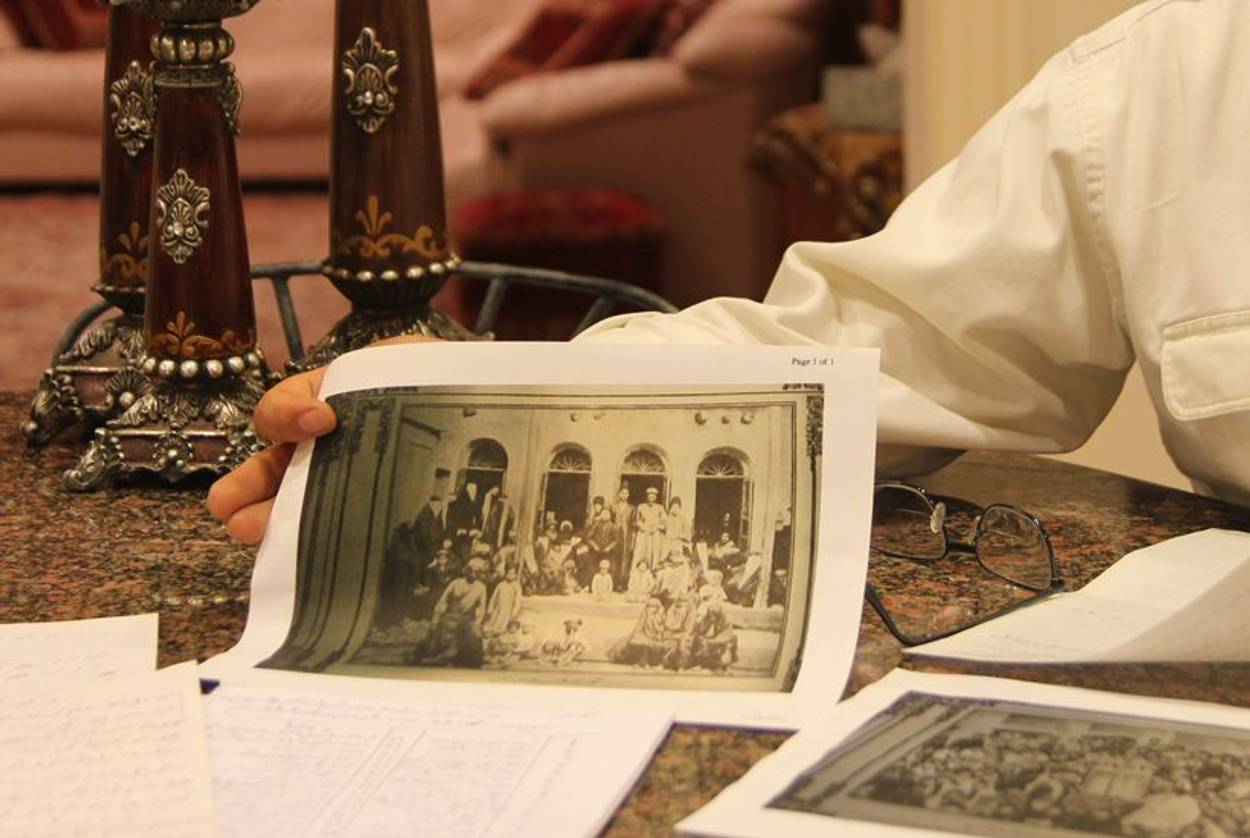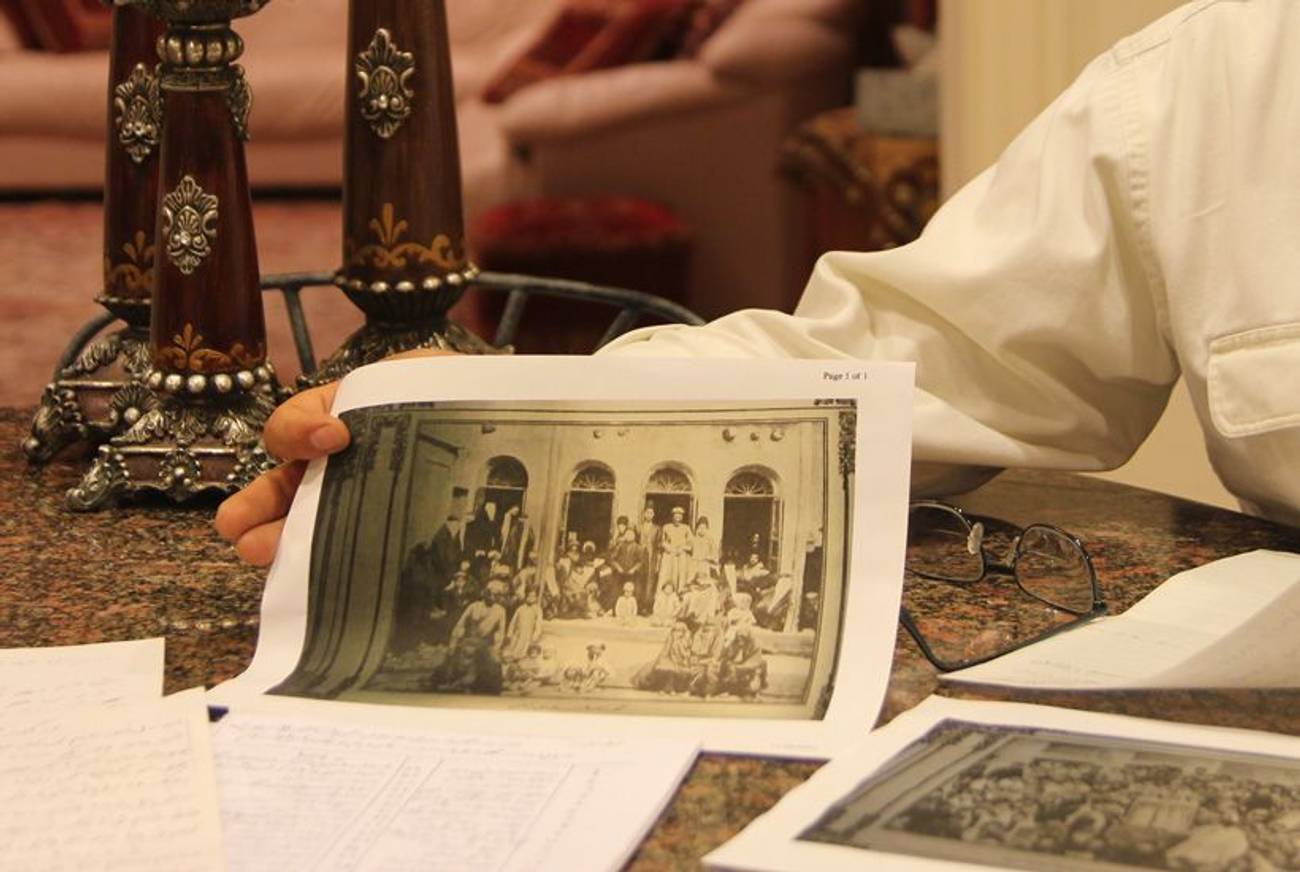Struggling To Preserve an Iranian Jewish Language Before It Goes Extinct
Jews from Iran to India once spoke their own languages. The few remaining speakers are now the ends of those linguistic lines.




Isaac Yousefzadeh is in mourning for his mother, who passed away a few weeks ago. But with her death comes a second, more subtle loss—that of her language, Judeo-Kashani, which is now on the verge of extinction. “It’s like somebody is sick in bed and in another few days or years he will die,” he said. “That’s it.”
The language’s speakers trace their roots to Kashan, a city in central Iran where Judeo-Kashani had been spoken for centuries. But in the past several decades, the Jews of Kashan have scattered—first to Tehran, and later around the world—and their descendants have adopted different languages. Virtually the only speakers left are a handful of Jews from Yousefzadeh’s generation who were born in Kashan, a city that no longer has any Jewish residents. They are the end of the linguistic line. “It’s a language that each day, the number of people that know it is less and less,” said Yousefzadeh. “In 20 years, I’d say no one would speak it. Because they’re dying each day.”
Judeo-Kashani is not alone. Dozens of Jewish communities in Iran, India, and the Caucasus region once spoke their own languages, which encoded centuries of Jewish life; today they, like Judeo-Kashani, are dying off.
With approximately one of the world’s 7,000 languages going extinct every 14 days, linguists around the world are trying to document them before they go. Scholars in Brazil, the United States, and Israel are working specifically on Jewish languages; New York alone is home to at least seven endangered Jewish languages, ranging from Juhuri, once spoken by Jews from the Caucasus Mountains, to a different Persian-Jewish dialect from Isfahan. Because speakers are getting older, the Endangered Language Alliance in New York has launched a project dedicated to recording and transcribing these languages while they are still being spoken—including Judeo-Kashani.
Yousefzadeh, now in his sixties, sits at the kitchen table in his Long Island home and describes Jewish life—the characters and the tensions—he remembers from Kashan. He puts on his reading glasses and begins to recite from a tightly packed list in handwritten Persian script, a record of the past. “Yehada Rahamim and seven children,” he said, his finger slowly moving down the list. “Rabbi Abbol Levy and six children. Yehezkel Haim Meshedi. This guy had six children.” These are the names of approximately 300 Jewish families—roughly 2,500 Jews—who lived in Kashan with him. The list was created by two men who had also grown up in Kashan and made this record based on their memories of families who’d lived there; Yousefzadeh estimates that only 20 percent of the people on the list are still alive.
“I have memories when I see this list,” he said, taking off his glasses. “How they take a bath, how they went to the school, how they went even to buy a piece of bread—they had a tough time.”
He describes Kashan as no bigger than Great Neck, not far from where he now lives on Long Island; it had seven synagogues packed into a space so tight that it was nicknamed Little Jerusalem: “I want to say that the synagogues were like two to three minutes walking from each other.” He remembers the Small Synagogue, another opposite a cheese-maker, and another built by one of three childless brothers who also built a Jewish burial ground, a public bath, and a school.
He remembers the hardships, too. Yousefzadeh describes Jews living four to six people in a room, as well as restrictions on buying food and going out in the rain: “Because they’re Jewish and according to Muslims they’re not clean, they weren’t meant to touch [food].”
Historian David Yeroushalmi, a senior fellow at the Alliance Center for Iranian Studies who specializes in the history and cultural heritage of Iranian Jewry, paints a complicated picture of Jewish life in Kashan. In the 15th and 16th centuries, it was a major center of Jewish learning, and the Muslim population had a reputation for being relatively tolerant toward Jews. But as Shi’a began to take hold from the 16th century onward, the Shi’ite population began to develop a harsher opinion of religious minorities including Jews, Christians, and Zoroastrians. There were known periods of persecution and forced conversions, but less so than in other Jewish communities, says Yeroushalmi; Jews could still engage in Jewish life, and the Jewish quarter wasn’t entirely set apart. Nonetheless, Jews were outsiders and their language reflected that.
“First of all, the Jews had a different accent to the Muslims,” said Yousefzadeh. “There were different words that Jews would use. It’d mean that people would find out if these were Muslims or Jews talking.”
Jews developed their own dialects wherever they lived, including Kashan, infusing local languages with the odd Hebrew word or developing completely different dialects. Over centuries, their words and idioms evolved to reflect their speakers and how isolated they were. According to Habib Borjian, who specializes in the history of Iranian dialects and languages including Judeo-Kashani, Jews probably spoke the original dialect of Kashan. They must have known some Persian, in order to communicate with the wider population, but he explains that their relative insularity kept Judeo-Kashani intact and alive, while the local dialect spoken by Muslims evolved.
Kashan had been a center of trade. From the 17th until the 20th century, it was known for its silk works and weaving. Yeroushalmi explains that despite a circle of wealthy Jewish families, “the masses of the Jews were actually lower class” and did a variety of menial work. But the economic opportunities presented by Iran’s new ruler Reza Shah Pahlavi in the 1920s put an end to the relative isolation that had nurtured Judeo-Kashani. The vast majority of Jews left for Tehran between the 1920s and early 1950s in search of opportunities. Yousefzadeh’s family was one of the last to leave, when he was about 5.
In Tehran, business was done in Persian, groceries were bought in Persian, and lessons were taught in Persian. Kashani Jewish families that had spent centuries living in the same neighborhood in Kashan were eventually dispersed across the much larger capital. Uprooted from the place where it had been spoken for centuries, Judeo-Kashani began its decline. Yousefzadeh spoke Judeo-Kashani less and less. Even the one or two Judeo-Kashani speakers at his school preferred to speak Persian. “When you move somewhere, you need to speak with that city’s language. Otherwise people make fun of you,” he said.
Judeo-Kashani’s decline accelerated after the Ayatollah Khomeini came to power in 1979. “Once they were all in Kashan. After the revolution, they’re in hundreds of different countries,” said Yousefzadeh, who was 30 when the shah fell. He came to the United States a few days after the revolution, expecting to go back any day. It took him two years to realize he wouldn’t.
It’s hard to know exactly how many Judeo-Kashani speakers are left. Borjian estimates dozens, but he points out that calculating the number is almost beside the point. It doesn’t matter how many individuals know or remember a language; if speakers are dispersed and have very little opportunity to speak it, “it’s already almost a dead language,” said Borjian. “If it’s not spoken any longer, it should be considered vanished, and this is what Judeo-Kashani is.”
Far from his hometown, or many people who shared its language, Yousefzadeh found his own proficiency in Judeo-Kashani fading. “When you don’t practice, you forget sometimes,” he said. “Some of the words, I have say twice to say in the right accent.” (To hear audio of Yousefzadeh speaking Judeo-Kashani, reciting a poem and translating it into English, click here.)
A couple of the remaining Judeo-Kashani speakers tried to put together a list of words and their translations, Yousefzadeh said, but very few people have shown any interest. “No one will buy it,” he said.
As the last speakers of Judeo-Kashani—as well as other endangered Jewish languages—are entering their twilight years, the need to document them, as a way to preserve not only the language but also the window onto Jewish life, has become more urgent. Linguist Sarah Benor puts this loss into stark terms: “Language is so intimately tied to culture,” she said, “that any particular group that loses its language also loses its sense of cultural distinctiveness.”
Jewish languages are living artifacts that give us clues about Jewish life—everything from jokes to songs to poems to personal memories. “We can draw general conclusions about the history of a people or a place by studying the language,” said Borjian. Once the languages are gone, they take much of that information with them.
The Endangered Language Alliance, in which Borjian plays an active part, has recently established a project to document the Jewish languages spoken in New York. Yet there is a difference between documentation and preservation. The ELA can film and record interviews with speakers telling stories, speaking, or singing songs. Its researchers can transcribe what they hear, draw out the grammar, figure out how verbs are conjugated and sentences put together, but they cannot stop a language from dying. “Preservation can be only done by the speakers themselves,” Borjian said, “not much can be done by an outsider.”
Not all Jewish languages have been discovered, and some may have already passed away unnoticed. Benor, a professor at Hebrew Union College who specializes in Jewish languages, puts the number of endangered Jewish languages at around two dozen. And she notes that the ELA is not the only place trying to keep records about these languages: In Israel, she says, there have been efforts to document Judeo-Malayalam, from southern India.
But the stakes are clear. “If we don’t have a record of these endangered languages, then we really won’t know much about these communities,” said Benor. “By documenting these languages we’ll get another window into the Jewish people.”
Iris Mansour has written for Reuters, The Guardian, and Time Out, among others. In 2011 she traveled from London to the U.S. in search of her American dreams and became prom queen. Now she’s a New Yorker. Follow her on Twitter @irisist.